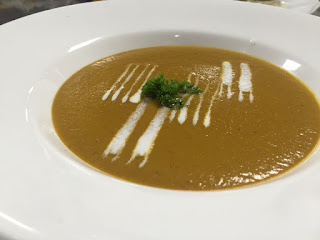pasta tortellini
HISTORY OF PASTA:
Typically, pasta is a noodle made from an unleavened dough of a durum wheat flour mixed with water or eggs and formed into sheets or various shapes, then cooked by boiling or baking. It can also be made with flour from other cereals or grains.[citation needed] Pastas may be divided into two broad categories, dried (pasta secca) and fresh (pasta fresca).
Most dried pasta is commercially produced via an extrusion process although it can be produced in most homes. Fresh pasta was traditionally produced by hand, sometimes with the aid of simple machines,[3] but today many varieties of fresh pasta are also commercially produced by large-scale machines, and the products are widely available in supermarkets.
Since the time of Cato, basic pasta dough has been made mostly of wheat flour or semolina,[4] with durum wheat used predominantly in the South of Italy and soft wheat in the North. Regionally other grains have been used, including those from barley, buckwheat, rye, rice, and maize, as well as chestnut and chickpea flours.
Tortellini with basil pesto and cheese sauce
Portion:
1
INGREDIENTS
|
QUANTITY
|
FOR PASTA
|
|
Flour
|
100GM
|
Egg
|
1
|
Salt & pepper
|
2gm
|
For stuffing
|
|
Pumpkin
|
50 gm
|
Basil
|
6 nos
|
For polenta
|
|
polenta
|
50 gms
|
Water/ milk
|
200 ml
|
Salt & pepper
|
5gm
|
For basil pesto
|
|
Basil
|
50gm
|
Garlic
|
5gm
|
Parmesan
|
2gm
|
Pine nuts
|
10gm
|
Olive oil
|
100ml
|
For cheese sauce
|
|
Béchamel
|
100ml
|
Cheese
|
20gm
|
Method:
HOMEMADE
PASTA:
1.
To make the dough
by hand, mound the flour in a bowl or better yet on a flat, non-porous surface
— your counter or tabletop work great. Add a pinch of salt to the flour.
Without it, the pasta will taste flat.
Make a well in the mound of flour and
crack the eggs into the well. Use a fork to beat the eggs in the well, then slowly
incorporate the flour from the sides of the well into the egg mixture.
2.
Once the flour is
fully incorporated and is too thick to mix with a fork, it’s time to knead by
hand. Kneading the dough creates the critical gluten structure that holds the
pasta together. Knead the dough until it is smooth, very firm, and dry — about
8 to 12 minutes. If it feels sticky, dust your dough and work surface with
flour and knead until smooth and firm.
3.
The dough is ready
to be shaped when you can set the dough on a clean countertop without it
sticking. Portion the dough into balls. Keep the balls of dough relatively
small for easier handling — about tennis ball-size. As you become more
comfortable with the dough, you can shape larger pieces of pasta.
Tightly wrap the pasta dough in plastic and let it sit
at room temperature for about an hour to give the gluten a chance to relax.
This step makes the dough easier to work with — keeps it from shrinking and
snapping back as you stretch it.
POLENTA:
- Bring
water and salt to a boil in a large saucepan; pour polenta slowly into
boiling water, whisking constantly until all polenta is stirred in and
there are no lumps.
- Reduce
heat to low and simmer, whisking often, until polenta starts to thicken,
about 5 minutes. Polenta mixture should still be slightly loose. Cover and
cook for 30 minutes, whisking every 5 to 6 minutes. When polenta is too
thick to whisk, stir with a wooden spoon. Polenta is done when texture is
creamy and the individual grains are tender.
- Turn
off heat and gently stir 2 tablespoons butter into polenta until butter
partially melts; mix 1/2 cup Parmigiano-Reggiano cheese into polenta until
cheese has melted. Cover and let stand 5 minutes to thicken; stir and
taste for salt before transferring to a serving bowl. Top polenta with
remaining 1 tablespoon butter and about 1 tablespoon freshly grated
Parmigiano-Reggiano cheese for garnish.
BASIL
PESTO:
1. Place the basil leaves
and pine nuts into the bowl of a food processor and pulse a several times.
2. Add the garlic and Parmesan
or Romano cheese and pulse several times more. Scrape down the sides of the
food processor with a rubber spatula.
3. While the food processor
is running, slowly add the olive oil in a steady small stream. Adding the olive
oil slowly, while the processor is running, will help it emulsify and help keep
the olive oil from separating. Occasionally stop to scrape down the sides of
the food processor.Stir in some salt and freshly ground black pepper to taste.




Comments
Post a Comment